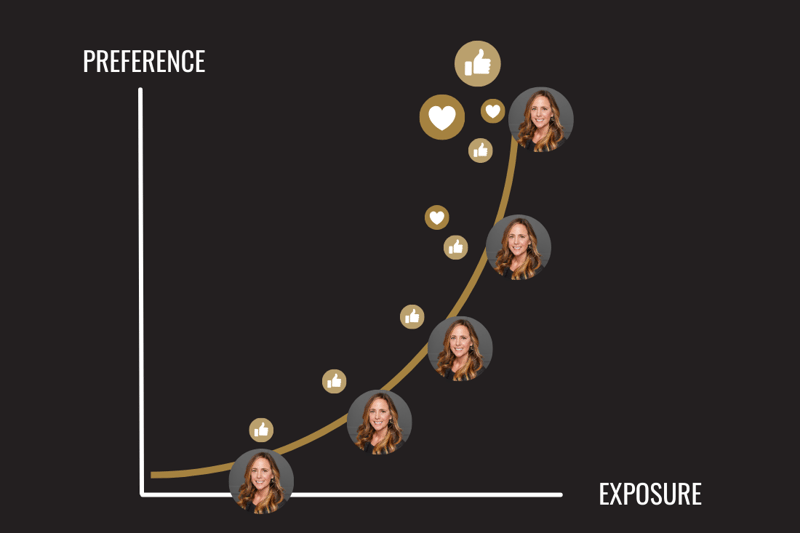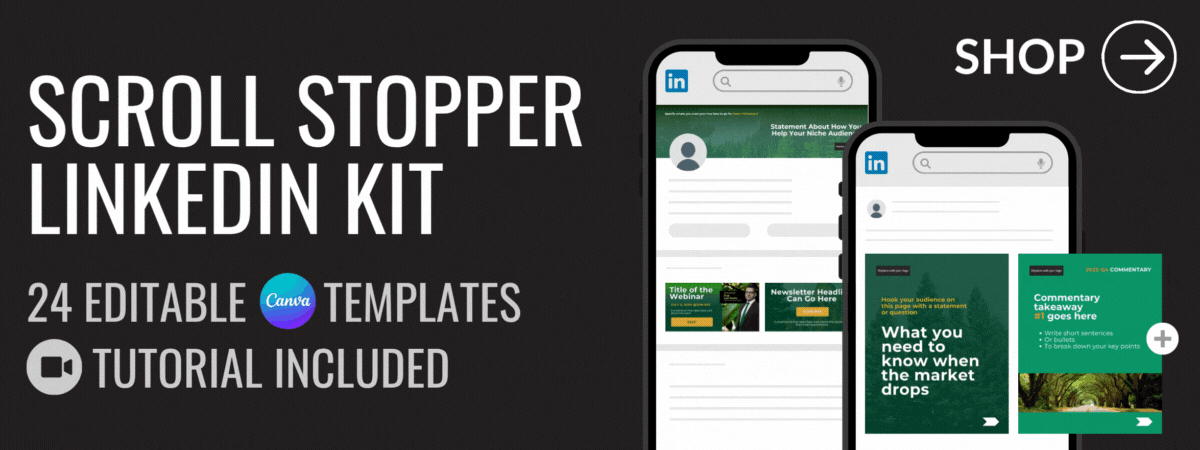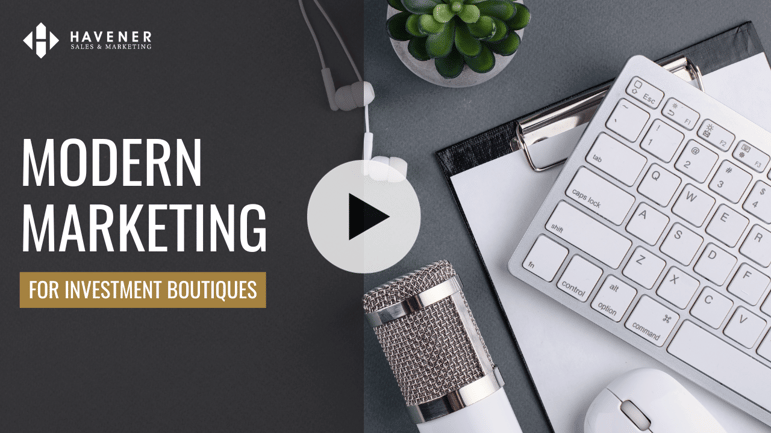What’s the first very first thing someone's going to do after they meet you? Google you. 100%, you are getting Googled.
And what’s the first thing that's going to show up? LinkedIn. Why? Because LinkedIn has high domain authority. In other words, people spend time there and the information is reliable so Google prioritizes showing you results from LinkedIn before websites with lower domain authority.
LinkedIn has more than 1 BILLION members and 40% access it daily, racking up over 2 Billion interactions per month.
So now let’s say someone Googles you and your LinkedIn profile is the first result and they click on it. Are you capitalizing on the opportunity? This is your chance to let that person see you as a credible thought leader and trustworthy guide.
If you’re new to actively connecting and posting on LinkedIn, make sure to optimize your profile and get our free checklist here: How Investment Boutiques Can Get Active on LinkedIn
Already checked those boxes? Let’s dive into some more advanced topics: getting seen, connecting and engaging strategically, and posting with purpose.
Ensure your profile allows search engines to find you
- Click the Me icon at the top of your LinkedIn homepage, then Settings & Privacy.
- Click Visibility in the sidebar > click Edit your public profile.
- Toggle your profile’s public visibility to ON.
- Select Public under Profile Photo and toggle all the to options to SHOW.
- While you’re in there, we also recommend allowing others to see when you've viewed their profile; it’s another chance to make connections.
- From Visibility settings, click Profile Viewing Options > Select Your name and headline.
Connect strategically
Think about your real-life relationships—your network is filled with people you trust, admire, respect, and enjoy. Connect with those people on LinkedIn first and build your connections organically. (Do not send a connection request to absolutely everyone.) We’re talking about:
- Current and former colleagues
- Fellow members of associations, communities, and groups
- Current and former clients
- Current prospects and investors
- Industry friends, partners, and vendors
- People you know that fit your target market
Then, you can start branching out a bit and get a little more strategic:
- Check who’s viewing your profile, and then take a look at their profile. Are they in your target market? Send a connection request.
- Did you meet with anyone this week? Send a connection request.
- Pay attention to post comments. Did someone comment on your post, and they’re not a 1st connection? Did you comment on your connection’s post, and someone else engaged with you in the comments? Again, see if they’re in your target market and send a connection request.
- Go to the page of someone you admire, view the “Activity” section of their profile, and see who is commenting on their posts. Are they in your target market? Send a connection request.
If you don’t think the person will recognize your name right off the bat, include a personal message with your invitation, which serves two purposes:
- Trying to connect with a stranger with no context feels off (and the personal message makes it much more likely they’ll accept your invitation).
- LinkedIn doesn’t like when too many of your invitations are ignored, left pending, or marked as spam by the recipients; they will temporarily restrict your account.
Engage before you post
We can’t stress enough how important it is to leave thoughtful comments on other people’s posts. It’s more important than posting. If you’re posting on LinkedIn and “it’s not working” make sure you are embracing the social aspect of the platform… having conversations. Why?
- The algorithm likes to see you contributing.
- Often you’ll get more value out of commenting on other people's posts than out of your own posts (especially when starting out) because you jump into a conversation already happening.
- Engaging creates a reciprocal relationship. Often when you comment on someone else’s post, they’ll comment on yours.
Create a routine for yourself where you comment on 5–10 posts daily. Comment on posts of other people who serve the same target market as you and/or people who post content you love. Spending time on people and content you love makes it fun instead of just about the outcome!
Pro tip: Figure out the time that a creator with a big following in the ecosystem you serve publishes their posts and be the first to comment. This provides the added benefit of getting in front of their followers.
If capitalizing on this digital space is interesting to you, you may want to watch an interview with our founder on modern marketing for investment boutiques.
Post consistently… and don’t give up
In the beginning, posting can be deafeningly silent. It’s scary to hit post and then hear crickets. You might get zero likes and want to throw in the towel. But don’t. It takes engaging consistently and posting consistently to get your impressions up (make your posts appear in more feeds).
Ideally, post 3–7x/week. If 7 is overwhelming, start with 3. The algorithm will penalize you if you publish multiple posts in less than 18 hours (including re-posts) so don’t post more than once a day unless you have something so important that the penalty is worth doubling up.
Also remember to stick around after you post to reply back to people who leave a comment on your post. The algorithm rewards you for it.
Experiment to find the best time to post
Weekday mornings are, in general, a good time to post, but experiment to see what works best for you. The most important part is to post consistently on the same days. If you’re going to post 3 days/week, run a few experiments on dates and times; then stick with the same 3 days every week roughly around the same time. Consistency is key.
Focus on the value of your post, not the length
The depth of the post matters more than the length of the post. The meat of the post should include 3–5 valuable points or takeaways, plus a hook and conclusion.
How much time a reader spends on your LinkedIn post (AKA “dwell time”) plays a role in your reach so you need substance in your post. However, people like to be able to scan and get the gist of what you have to say quickly (only then will they read a post from start to finish) so it’s important that you balance a longer post with concise language and line breaks.
Post photos and videos
There’s a psychological phenomenon where people develop a preference for things (or people) merely because they are familiar with them. It’s called the mere-exposure effect. Seeing posts or updates from a specific person or page frequently on social media platforms can lead to a preference for that person or content. Additionally, social media algorithms are said to prefer content with faces. Try showing yourself behind the scenes: at a conference, in your office, doing something you enjoy.

LinkedIn reports that videos get 5x more engagement than other post types. Not links to videos. Actual uploaded videos. Informality performs well on LinkedIn so get out your smartphone, point, and shoot.
Don’t put links in your posts
Shift your focus from getting to giving. Your posts should serve and help, not ask people to go visit your website. You will develop a more loyal following because your followers will see you are there to give. Plus, LinkedIn prioritizes "zero-click content," which refers to content that is fully viewable and digestible within a post; you’ll get dinged for adding links.
Re-posting strategy
If you have a company page, your company page can re-post your personal posts. Don’t re-post your company page posts.


